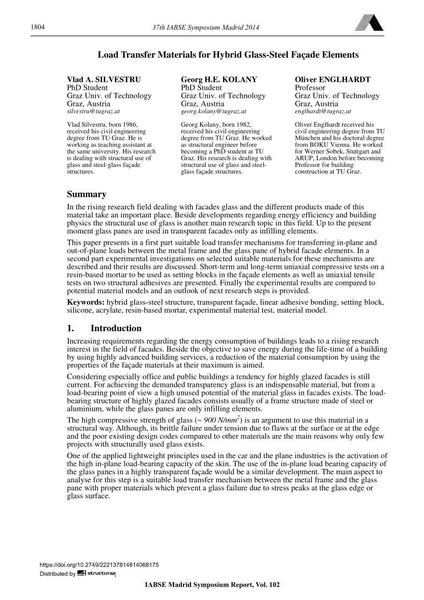Load Transfer Materials for Hybrid Glass-Steel Façade Elements

|
|
|||||||||||
Bibliografische Angaben
| Autor(en): |
Vlad A. Silvestru
Georg H. E. Kolany Oliver Englhardt |
||||
|---|---|---|---|---|---|
| Medium: | Tagungsbeitrag | ||||
| Sprache(n): | Englisch | ||||
| Tagung: | IABSE Symposium: Engineering for Progress, Nature and People, Madrid, Spain, 3-5 September 2014 | ||||
| Veröffentlicht in: | IABSE Symposium Madrid 2014 | ||||
|
|||||
| Seite(n): | 1804-1811 | ||||
| Anzahl der Seiten (im PDF): | 8 | ||||
| Jahr: | 2014 | ||||
| DOI: | 10.2749/222137814814068175 | ||||
| Abstrakt: |
In the rising research field dealing with facades glass and the different products made of this material take an important place. Beside developments regarding energy efficiency and building physics the structural use of glass is another main research topic in this field. Up to the present moment glass panes are used in transparent facades only as infilling elements. This paper presents in a first part suitable load transfer mechanisms for transferring in-plane and out-of-plane loads between the metal frame and the glass pane of hybrid facade elements. In a second part experimental investigations on selected suitable materials for these mechanisms are described and their results are discussed. Short-term and long-term uniaxial compressive tests on a resin-based mortar to be used as setting blocks in the façade elements as well as uniaxial tensile tests on two structural adhesives are presented. Finally the experimental results are compared to potential material models and an outlook of next research steps is provided. |
||||
| Stichwörter: |
Materialmodell Acrylat
|
||||
